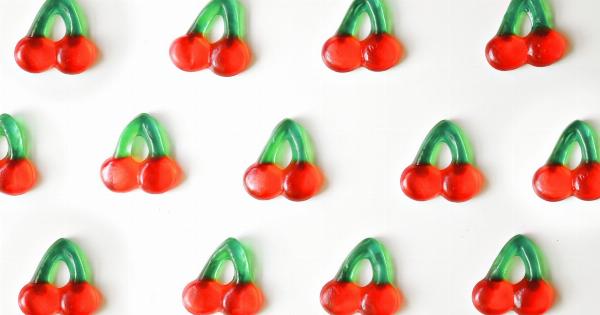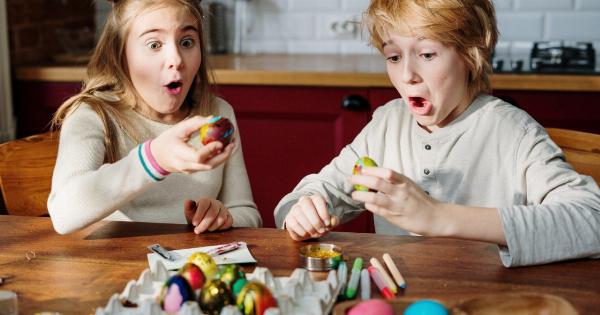Children’s mental health is a crucial aspect of their overall well-being. It encompasses their emotional, psychological, and social well-being, affecting their thinking, feeling, and behavior.
As parents, educators, and caregivers, it is essential to explore various methods to support and enhance children’s mental health. One approach that has gained popularity in recent years is color therapy.
What is Color Therapy?
Color therapy, also known as chromotherapy, is a holistic healing technique that uses colors to promote well-being and restore balance in the body, mind, and spirit.
Colors are believed to have a profound impact on our emotions, moods, and overall mental state. Each color is associated with specific energy vibrations that can affect our physical and psychological health.
The Psychological Effects of Colors
Colors have the power to evoke certain emotions and feelings. Here are some of the common psychological effects of different colors:.
1. Red
Red is a vibrant and energetic color that symbolizes passion and strength. It can stimulate the body and mind, increasing heart rate and blood pressure. Red is often associated with feelings of excitement, assertiveness, and intensity.
2. Blue
Blue is a calming color that promotes tranquility and relaxation. It is often associated with feelings of peace, serenity, and stability. Blue has been found to reduce stress and anxiety, making it beneficial for promoting mental well-being.
3. Yellow
Yellow is a bright and cheerful color that symbolizes happiness and optimism. It can evoke feelings of joy, enthusiasm, and creativity.
Yellow is believed to stimulate the mind and enhance concentration, making it beneficial for children’s cognitive development.
4. Green
Green is a color associated with nature, growth, and harmony. It has a soothing effect on the mind and can promote feelings of balance and renewal. Green is often used to promote relaxation and relieve stress.
5. Purple
Purple is a color that represents spirituality and wisdom. It has a calming and meditative effect on the mind, promoting a sense of peace and introspection. Purple is believed to enhance creativity and intuition.
Color Therapy Techniques for Children
Color therapy techniques can be easily incorporated into a child’s daily routine. Here are some ways you can use color therapy to enhance children’s mental health:.
1. Colorful Environment
Create a colorful and vibrant environment for children by using different colored decorations, artwork, and furnishings. Surrounding children with a variety of colors can stimulate their senses and promote a positive mood.
2. Colorful Wardrobe
Encourage children to wear clothing in various colors to enhance their mood and overall well-being. Let them choose their outfits to express their creativity and individuality.
3. Coloring Activities
Engage children in coloring activities that involve different colors. Provide them with coloring books or drawings that allow them to explore various shades and hues. This activity promotes relaxation, creativity, and focus.
4. Mood Boards
Help children create mood boards by cutting out pictures and colors from magazines or printing them from the internet. This activity allows children to express their emotions and preferences visually.
It can serve as a tool for self-reflection and understanding.
5. Color Meditation
Guide children through color meditation exercises where they focus on one color at a time. Encourage them to visualize the color surrounding them and absorb its energy.
This practice can help children relax, reduce anxiety, and improve their concentration.
6. Colorful Foods
Introduce a variety of colorful fruits and vegetables into children’s diets. Different colored foods contain various nutrients that support brain development and overall health. Encourage children to appreciate the vibrant colors of their meals.
7. Colorful Affirmations
Teach children positive affirmations associated with different colors.
For example, they can repeat phrases like “I am strong like red,” “I am calm like blue,” or “I am creative like yellow.” This practice reinforces positive self-perception and encourages emotional well-being.
8. Color Play Therapy
Engage children in color play therapy sessions where they use different colored materials like clay, paints, or building blocks. Allow them to freely express themselves through colors and observe their emotions during the process.
This therapeutic activity promotes self-expression and emotional release.
9. Colorful Visualization
Guide children through visualization exercises where they imagine themselves surrounded by their favorite colors. Encourage them to visualize positive experiences, feelings, and scenarios associated with each color.
Visualization can help children cultivate a positive mindset and manage stress.
10. Colorful Journaling
Encourage children to keep a colorful journal where they can write, draw, or paint their thoughts and feelings. Provide them with different colored pens, pencils, and markers to express themselves creatively.
Journaling can serve as a therapeutic outlet for children to process their emotions.
Conclusion
Color therapy offers a holistic and creative approach to enhance children’s mental health. By incorporating various colors into their environment, activities, and mindset, children can experience the psychological benefits of each color.
Whether it is through colorful decorations, wardrobe choices, coloring activities, or visualization exercises, color therapy can support children in developing emotional well-being, creativity, and self-expression.























